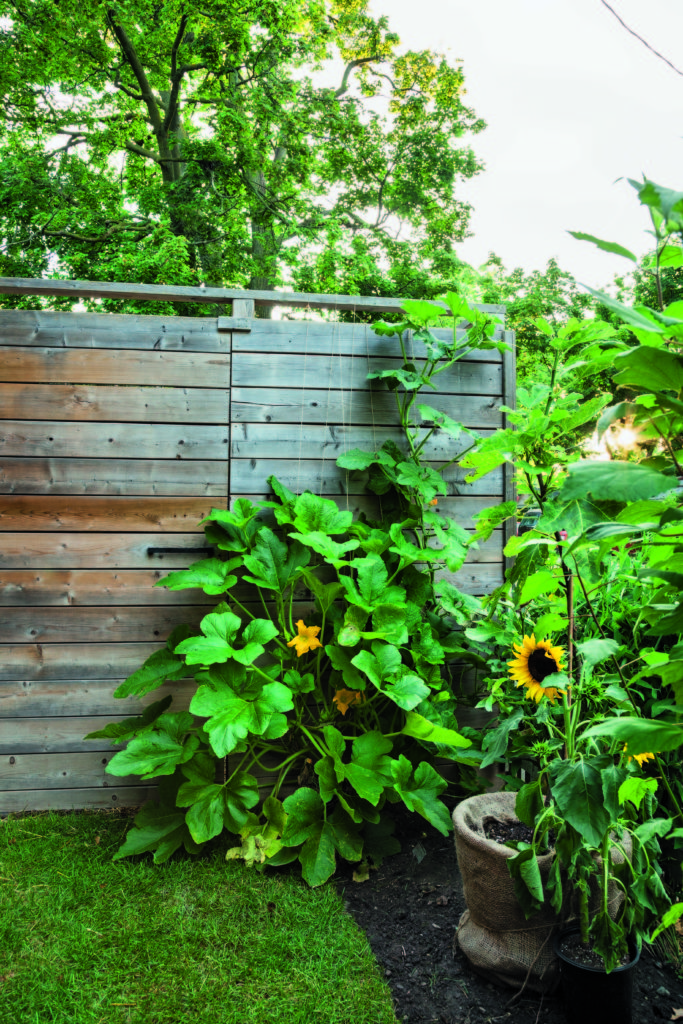Growing vegetables in your front yard
You don’t need acres of land to grow vegetables. In fact, all you need is a little space in your front yard. The following excerpt from “Gardening Your Front Yard” by Tara Nolan shows you how.

Years ago, when I lived in the big city, my route home from the bus stop took me past a tidy little bungalow with a tiny front garden. Instead of the typical foundation plantings—maybe a shrub or two and some annuals, there were always a couple of rows of tomato cages supporting multiple tomato plants. I marveled over this at the time because it was still fairly uncommon to see veggies in a front yard setting. But now, it’s not uncommon to come across a raised bed or two, brimming with veggies in a front yard garden. You might even find an entire front yard devoted to growing fruits and vegetables.
Both urban and suburban properties can often present a challenge to green thumbs who are longing to grow edible plants. What to do if your backyard is in complete shadow? Perhaps there is a giant tree on the property, or in a neighbor’s backyard, casting shade. (Or, possibly reaching its tentacled network of roots throughout the yard, making planting in the ground nearby next to impossible.) Raised beds can solve that problem, but if you don’t have any light, it doesn’t matter. The vegetables need to be planted where the sunshine is. Sometimes the front yard happens to be a prime location for growing food because that’s the area that gets the most sun.
Whatever the challenge, heat-loving veggies, such as tomatoes, melons, cucumbers, squash, peppers, and eggplants, need at least six to eight hours of sunlight a day to flourish. And, if it’s your front yard that offers those optimal conditions, why not use the space in this way?
If you’re not quite ready to commit to front yard rows of veggies planted in ground or in a raised bed, there are ways to scatter them throughout a landscape—cleverly tucked among the ornamental plants. Find a fancy obelisk and place it around a tomato that’s been snuck in among perennials. Or, create a tidy row of edible edging along a garden border, using greens, like lettuce, spinach, kale, and herbs.
Foodscaping is a word that has woven its way into the popular gardening lexicon, in parallel with edible landscaping. Rather than planting those typical rows of yore, the plants are worked into the design of the landscape, much like perennials. Texture, size, form, and color are all taken into consideration when planting both perennial and annual fruits and vegetables. Herbs can offer a great deal of diversity in terms of texture and leaf size—not to mention flavor. Look to add different varieties of sage, lemon thyme, parsley, and mint to container arrangements in place of other common “fillers.”
Of course, there are benefits to planting food and flowers together. Not only will the plantings look nice from the curb, you’ll attract valuable pollinators and other beneficial insects to your garden.
For small-space gardeners, who might once have thought a bountiful harvest was out of reach, there are now many compact varieties of food plants available that can allow them to grow edibles in pots or smaller gardens. Keep an eye out for climbers, like cucumbers, watermelon, and beans, and tried-and-true favorites, tomatoes and peppers. These special plant varieties will not take over a space. And, there’s no need to worry about a squash plant snaking its way through your garden to the neighbor’s house. (Though that sometimes happens with my neighbor’s plants, and I don’t mind the unexpected harvest!)
Most food plants are also very ornamental in nature. Think about what they add to a garden in terms of color, flowers, foliage, and texture. Fennel adds a beautiful, fluffy texture to a garden. Speaking of texture, I’ve even seen asparagus being used as a hedge—after the spring harvest when the plant goes wild!
Think about other places you can sneak in food where flowers might have once ruled. Add a strawberry plant with red flowers to a hanging basket rather than a flowering annual. Even the fruit of some pepper plant varieties, like Mad Hatter and Dragon Roll, a shishito pepper, almost look like Christmas ornaments when they’re dripping with peppers waiting to ripen.
This chapter is one that’s near and dear to my heart because, in speaking about front yard veggie gardens, I get to delve into one of my favorite topics: raised beds. This ties into my last book, “Raised Bed Revolution,” because there are some raised bed projects both big and small that work really well in a front yard garden.
Growing food is a great way to taste new varieties and cross summer items off your grocery list—when you get to “shop” for them in your own yard. Whether your front yard is big or small, be on the lookout for inspiration and clever projects for your veggies.
This, “Growing vegetables in your front yard,” is excerpted from Gardening Your Front Yard by Tara Nolan. Used with permission of the publisher, Cool Springs Press.
